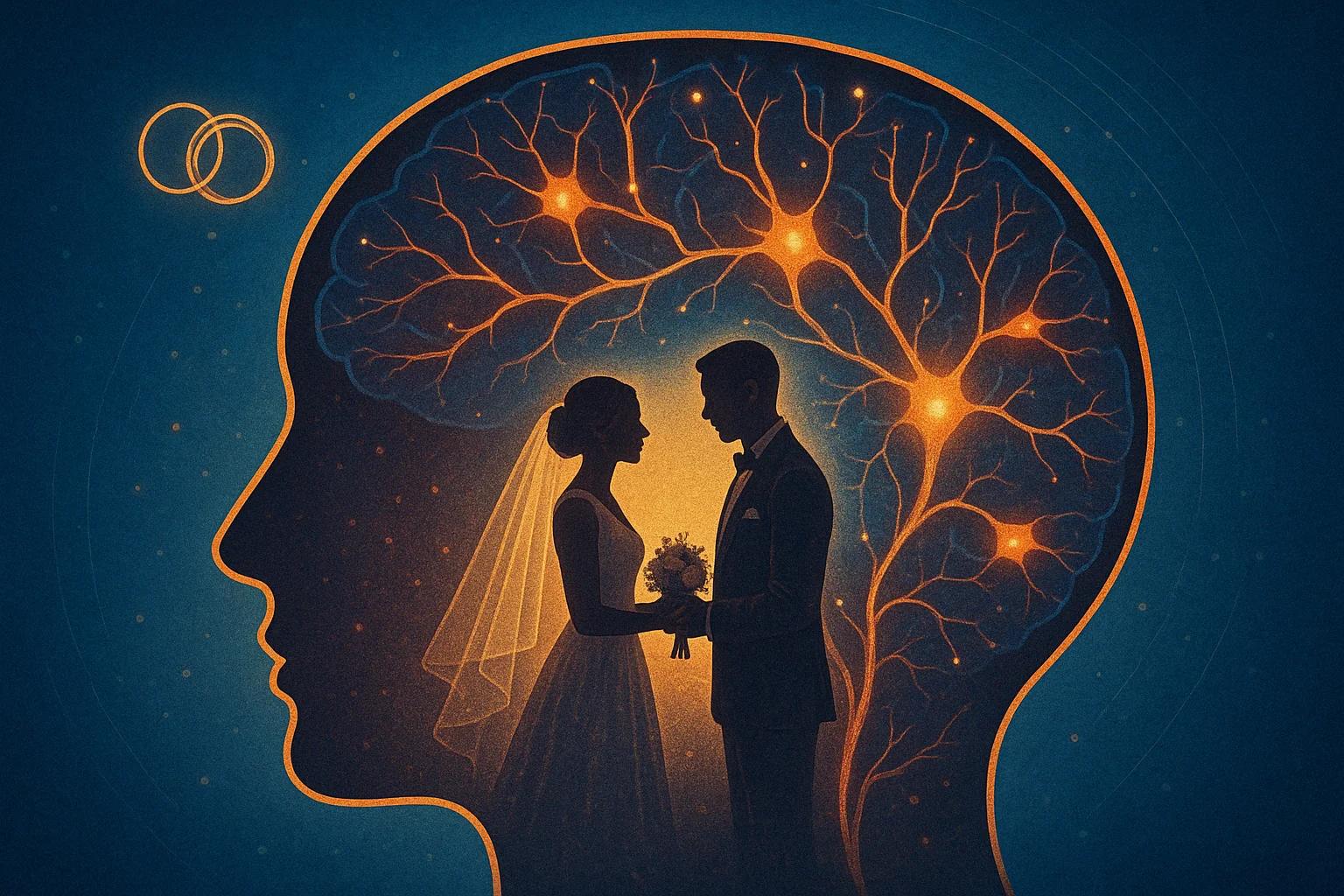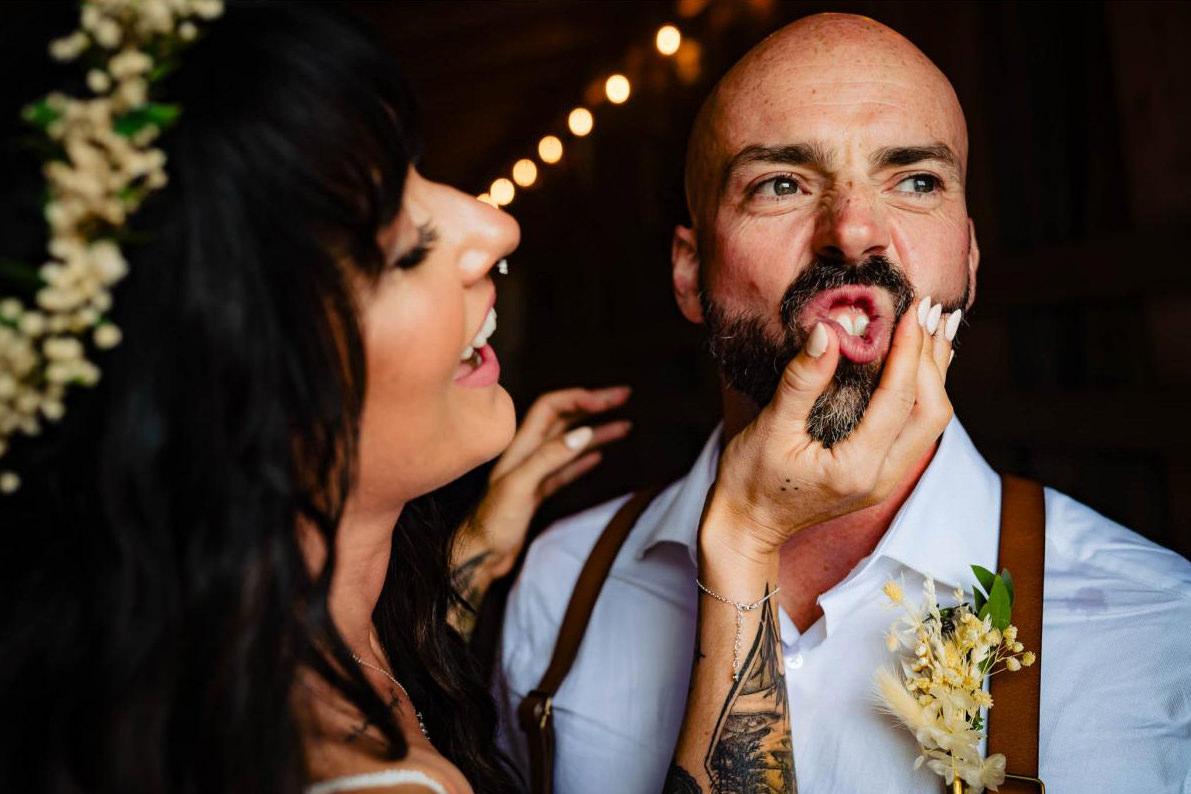Your brain doesn’t just see a wedding photo. It relives it. That smile, that touch, that tear? They fire real responses in your mind and body—long after the moment has passed.
Wedding photography isn’t just about documentation—it’s about memory, emotion, identity, and connection. When we look at a powerful wedding image, we don’t just remember the day—we feel it. Why? Because our brains are wired to respond deeply to emotionally significant visuals, especially those tied to love, ritual, and social bonding.
This article explores the neuroscience behind wedding photography—how our brains process emotionally intense experiences like weddings, and why certain images become so enduring in our memory.

Why Weddings Hit the Brain Differently
A wedding is not just an event—it’s a neurological storm.
- Dopamine surges during anticipation, pleasure, and peak emotional moments (like a first look or walking down the aisle).
- Oxytocin, the “bonding hormone,” is released through physical touch, emotional closeness, and shared ritual—making moments like vows and hugs feel imprinted.
- Adrenaline and cortisol spike in high-stress moments, which can affect memory clarity (ever wonder why the day feels like a blur?).
- The amygdala and hippocampus—parts of the brain responsible for emotional tagging and memory encoding—work overtime.
This makes weddings unusually vivid but also paradoxically hard to recall. That’s where photography steps in.
What the Brain Does With Emotionally Charged Images
When we look at a photo tied to an emotional memory, several things happen:
- The visual cortex processes the image, but emotional brain regions (like the amygdala and insula) light up too.
- If the photo captures a moment we lived, it acts as a retrieval cue—reawakening the surrounding sensory memory.
- If the photo is of someone else, we engage in emotional contagion—mirroring their expression and projecting meaning.
This is why wedding photos feel alive. They’re not passive images; they’re emotionally interactive.

How Photography Enhances—and Preserves—Memory
Our brains are imperfect storytellers. Over time, memories fade, compress, and distort.
But photography:
- Preserves facial expressions, gestures, and micro-moments we’d otherwise forget
- Reinforces memories through visual reconsolidation—each viewing strengthens the neural pathway
- Allows for shared memory across family and generations
When the brain forgets, photos help remind, restore, and re-feel.
Why Some Photos Make Us Cry
There’s a reason a single image—like a quiet glance, a spontaneous laugh, or a grandparent’s tear—can trigger tears of your own.
- Your brain reads facial expressions subconsciously, triggering mirrored emotion.
- Photos of people we love activate the ventromedial prefrontal cortex, a region associated with attachment and moral meaning.
- Nostalgic images engage the default mode network, which relates to identity, self-narrative, and emotional processing.
In short: the right image hits us in the story of who we are—not just what we saw.

Why Wedding Photography Feels Different From Other Photography
- The emotional intensity of the event
- The symbolic weight of the rituals
- The social importance of the relationships captured
- The presence of touch, ceremony, and anticipation—all of which activate the bonding brain
No other genre of photography compresses so much neurosensory information into so few frames.
What This Means for Couples (and Photographers)
When you hire a wedding photographer, you’re not just hiring someone to take pictures. You’re hiring someone to:
- Interpret and preserve neuro-emotional milestones
- Create external memory anchors that shape how the day is remembered
- Capture moments you didn’t even know were happening—but your brain will recognize years later
That’s the science behind why wedding photos matter. And why, decades from now, they may still make your heart race.

Related Reading in This Series:
- What Happens in the Brain on a Wedding Day?
- Why Photographs Trigger Memory (and Emotion) So Powerfully
- How Nostalgia Works—and Why Wedding Photos Tap Into It
- The Role of Oxytocin in Love, Touch, and Remembering
- Emotional Contagion and the Power of Facial Expressions
- The Photographer as Emotional Interpreter
- What the Brain Remembers vs. What the Lens Sees